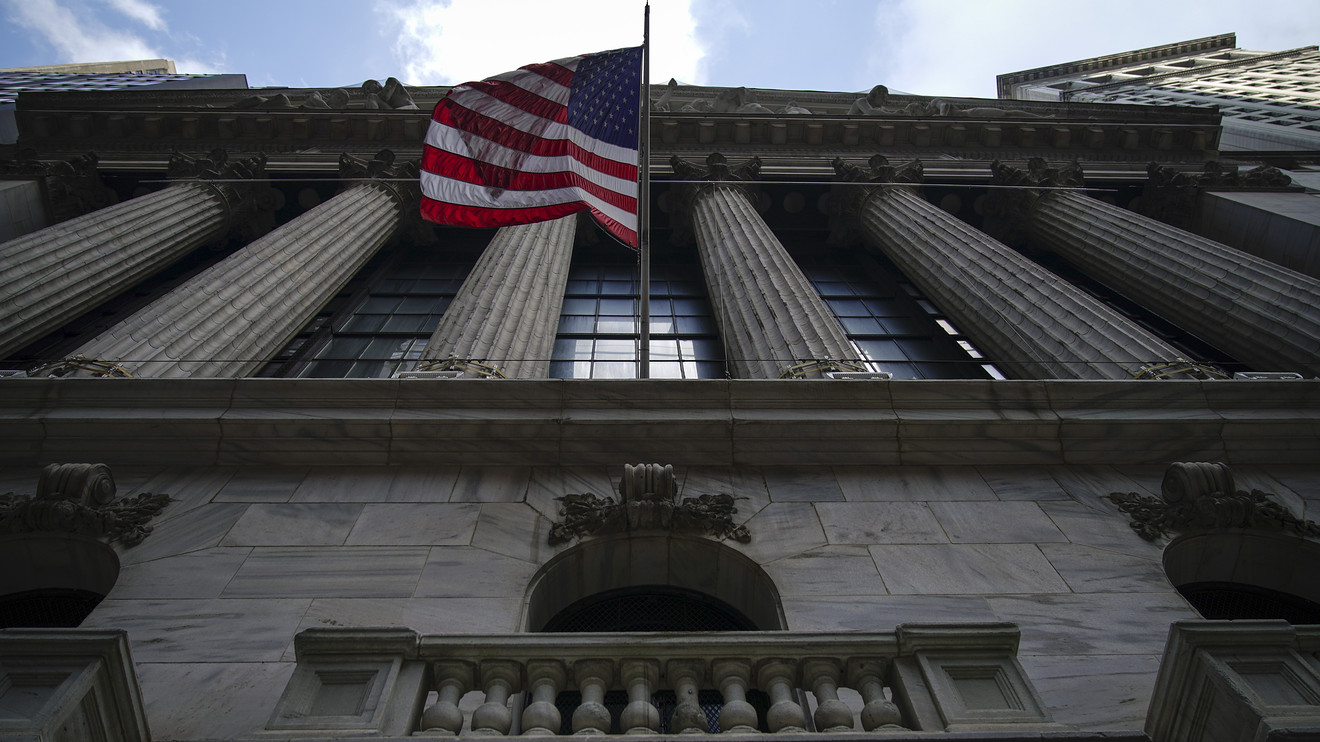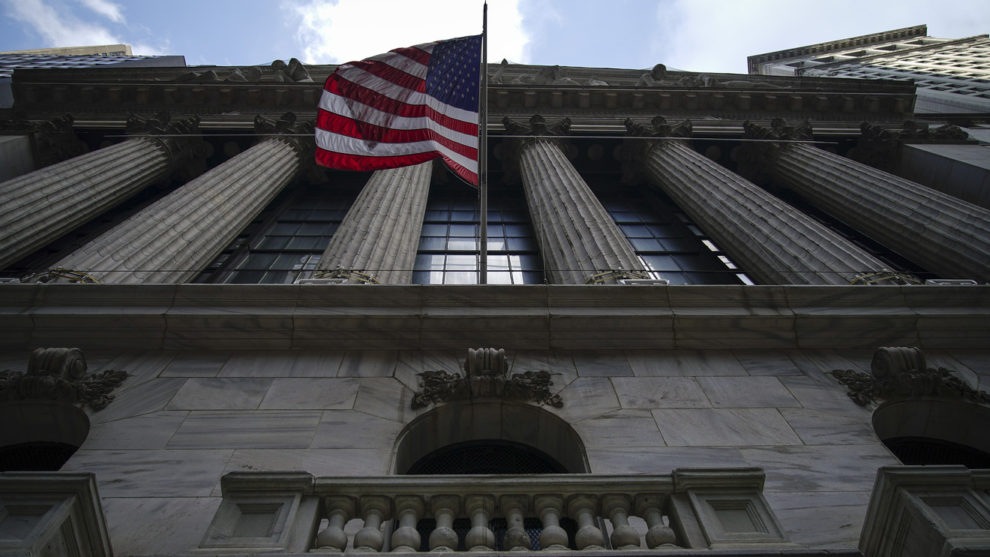
U.S. stocks plunged in afternoon trade as investors attempted to assess growing headwinds like the spread of COVID-19 outside China, even against the backdrop of still rosy domestic economic growth.
Global stocks were hammered Monday, with the Dow Jones Industrial Average and S&P 500 index charting their biggest one-day percentage losses in more than two years as investors feared disruptions to trade and travel from factory shutdowns due to the coronavirus epidemic.
What are major indexes doing?
The Dow Jones Industrial Average DJIA, -2.88% slid 726 points, 2.6%, to trade near 27,236, while the S&P 500 SPX, -2.73% lost 75 points, 2.4%, and was trading near 3,149. The Nasdaq Composite COMP, -2.47% declined to about 9,014, down 206 points or 2.2%. All three indexes started the morning in positive territory, then fell around midday.
On Monday, the Dow shed 1,031.60 points, or 3.6%, to settle at 27,960.80, while the S&P 500 slumped 111.86 points, or 3.4%, to close at 3,225.89 — the biggest one-day percentage falls for both indexes since Feb. 8, 2018. The Nasdaq Composite dropped 355.31 points, or 3.7%, to finish at 9,221.28, its biggest one-day drop since December 2018.
What’s driving the market?
Investors fear supply line disruptions may hit technology companies dependent on Chinese and South Korean factories in particular. Apple AAPL, -2.38% and Facebook FB, -1.41% have now fallen more than 10% from record highs seen last month.
“Investors remain stuck between their appetite for risk and the blurry impact of coronavirus which is leading to mixed market sentiment this week,” said Pierre Veyret, technical analyst at ActivTrades, in a note.
The number of worldwide cases of COVID-19 continues to rise. There are now 80,238 cases in 34 countries and at least 2,700 deaths, according to the World Health Organization (WHO). South Korea raised its coronavirus alert to the “highest level,” with the latest spike in numbers bringing the total infected to more than 800. Meanwhile, Italy has been the worst affected country outside of Asia, with more than 130 reported cases and seven deaths. Iran also confirmed 12 deaths.
Officials for the Centers for Disease Control and Prevention warned Americans on Tuesday that the outbreak “might be bad,” and that Americans should prepare for the possibility of disruptions.
See: How the S&P 500’s 11 sectors are trading as CDC warns that coronavirus spread ‘might be bad’
“I think people should be as calm as possible,” said Larry Kudlow, President Donald Trump’s top economic advisor, in a CNBC interview Tuesday, while stressing that, so far, the U.S. has been able to contain the coronavirus. “On the economic side, there is no tragedy in the U.S.,” he said. “Elsewhere it is a human disaster.”
In the U.S., home prices rose 2.9% compared to a year ago in December, according to the Case-Shiller home price index. That was an acceleration from November’s annual gain, but still moderate by the standards of recent years. Consumer confidence, as measured by The Conference Board, was below economists’ expectations in February, but still at a six-month high.
With speculation growing over the potential for a Federal Reserve interest rate cut as worries grow over the effects of the viral outbreak, investors will pay close attention to remarks by Fed Vice Chairman Richard Clarida scheduled for 3:15 p.m. Eastern.
Which companies are in focus?
- Shares of Home Depot Inc. HD, -0.45% rose 0.7% after the world’s largest home-improvement retailer on Tuesday beat fourth-quarter earnings and revenue expectations and hiked its dividend by 10%.
- Mallinckrodt PLC MNK, +11.75% saw its shares jump by 14.6, after the drugmaker announced a settlement agreement that would reserve all opioid-related claims. The company also reported fourth-quarter earnings that topped expectations.
- Lumber Liquidators Holdings Inc. LL, +15.83% said Tuesday that it swung to a fourth-quarter profit that topped Wall Street expectations. Shares rose 17.5%.
- Shares of HP Inc. HPQ, +4.25% jumped about 5.8% In a call with reporters and analysts late Monday ahead of the release of its first-quarter earnings, the company’s top two executives left open the door to a combination with Xerox Holdings Corp. XRX, +3.31% under certain conditions. Xerox has been trying to force a deal since November. Xerox shares rose 3.8%.
- Macy’s Inc. M, -5.31% shares were down nearly 5.3%, reversing early gains, after reporting fourth-quarter earnings Tuesday that topped estimates, while also sticking with previous guidance for 2020.
- Shares of General Electric Co. GE, -5.03% dropped nearly 3.7% in midday trading after an analyst questioned some items in the company’s annual filing.
- Mastercard Incorporated MA, -6.94% shares slid more than 5.6% after the company on Monday said the COVID-19 outbreak would dent sales. Shares of United Airlines Holdings, Inc. UAL, -5.93% fell more than 5.9% after the company rescinded its annual guidance on coronvirus concerns.
- Cracker Barrel Old Country Store Inc. CBRL, -2.07% shares ticked down after a 1% jump earlier, after reporting results that beat expectations.
Opinion: HP sends mixed message on Xerox while business continues to decline
How are other markets trading?
The price of a barrel of West Texas Intermediate crude for April delivery CLJ20, -2.59% on the New York Mercantile Exchange dropped 1.3% to $50.11.
Gold GCJ20, -1.84%, which jumped 1.7% Monday to a more-than-seven-year high as investors piled into traditional havens, settled 1.5% lower Tuesday at $1,651 an ounce.
The benchmark U.S. 10-year Treasury note TMUBMUSD10Y, -4.13% yield fell to 1.317%, setting a fresh all-time low, on demand for safe haven assets. Bond yields fall as prices rise.
The U.S dollar index DXY, -0.40% was down 0.4% against a basket of currency trading partners.
Asian markets continued to fall, with Japan’s Nikkei NIK, -3.34% —which had been closed for a holiday Monday — down over 3%. Australia’s S&P/ASX 200 XJO, -1.60% fell 1.6%, though South Korea’s Kospi 180721, +1.18%, which fell 4% on Monday, rebounded 1.2% on Tuesday.
European stocks SXXP, -1.76% couldn’t hold early gains. The FTSE MIB I945, -1.44% in Italy, which has the highest number of confirmed coronavirus cases in Europe, fell 1.4%.
William Watts contributing reporting
div > iframe { width: 100% !important; min-width: 300px; max-width: 800px; } ]]>











Add Comment